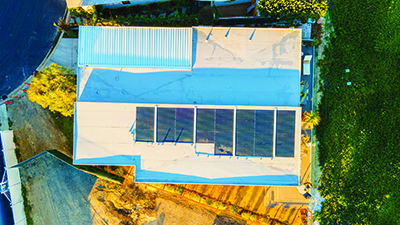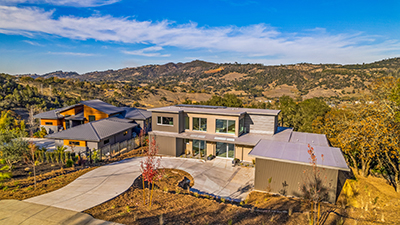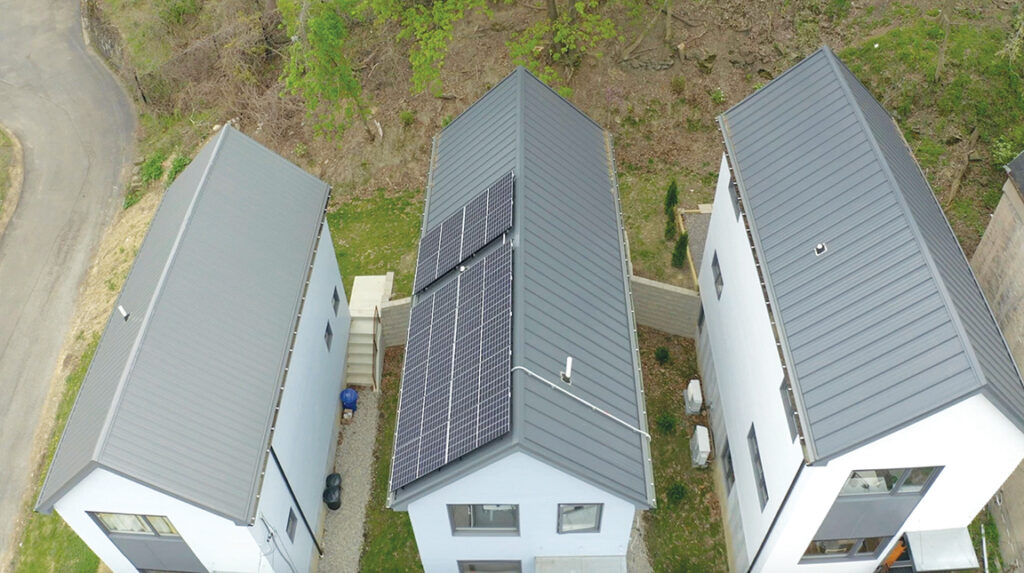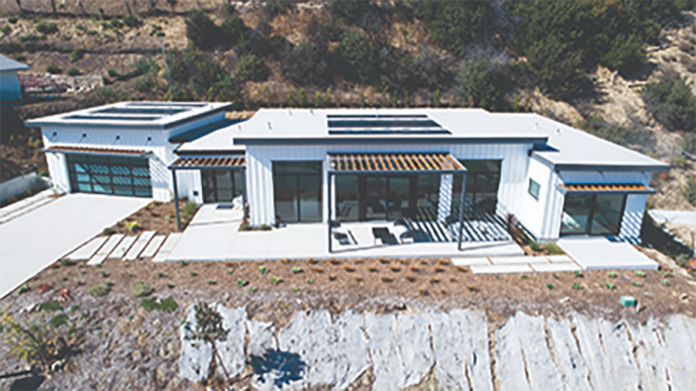Why aren’t more modular builders and factories installing solar power?
- For builders already building energy-efficient modular homes, chances are that many customers will be interested in a solar electric system.
- Factory-installed panels may not be the best option because of potential damage during module shipment, but the builder still needs to work with the factory to make sure the home is solar ready.
- It’s also important to work with a solar designer to ensure that the home design can accommodate all the elements required by the solar system.
Solar photovoltaics (PV) provide a largely untapped market opportunity for modular builders. Solar appeals to many customers seeking high-performance homes, especially near urban areas. There are some unique requirements for solar-ready buildings, so interested builders should be prepared to work closely with the modular manufacturer, as well as with a solar designer.
Harris Woodward, President of Finish Werks, a custom builder based in Savage, Maryland, sees solar PV as a promising option for builders of modular construction. He says that it can help them differentiate themselves in their local marketplace.
Minimizing the home’s energy use is crucial to making solar cost-effective, and modular is already more energy-efficient than conventional construction, he says. Homes that are built indoors have tighter tolerances, which means the workers can seal the building envelope more accurately than they could if working outdoors.
Finish Werks constructs custom, high-performance homes in the Baltimore, Md.-to-Washington, DC corridor that are often for older clients who want single-level housing. These homes may include solar PV, and in fact the company has built 20 homes with solar.
“For about one-third of the custom-built homes that we build, the owners opt to get to [net zero energy use], or as close to that as they can, by adding a solar PV system to their home.” Depending on the home design and the lot, the homeowners can opt for a roof-mounted or a ground-mounted array.
In his region, solar homes are particularly appealing to customers who are close to urban centers, Woodward says. These customers believe climate change and sustainability are important. In rural areas, clients often have tighter budgets and are less interested in renewable energy.
If customers don’t come to the table specifically asking for solar, he brings it up as an option. He says that modular builders often have to explain modular construction to their customers anyway, so adding in a few sentences about high-performance and zero-energy construction with solar PV is a worthwhile use of time.

Photo courtesy of Dvele
Design Considerations
Energy-efficient design reduces the cost of a solar system by reducing the size requirement, according to Ankur Dobriyal, Director of Off-Site Innovation at Module, a design-build company located in Pittsburgh, Pa. Improving the building envelope, windows, insulation, lighting and appliances has the effect of reducing the bottom-line cost of the solar energy system.
“We picked Zero Energy Ready Home as our baseline [for home design] because it allows us to start off with a home that is already super energy-efficient; a home that, if we add solar panels to it, could even go to net zero,” explains Dobriyal.
Zero Energy Ready is a US Department of Energy certification program. Qualifying homes are so efficient that a modest solar array can supply most, if not all, of their annual energy needs. “We try to get our homes to anywhere between 40% and 50% energy consumption [before solar] compared to a standard stick-built home,” Dobriyal says.
He adds that there are some design considerations that modular builders should be aware of if they want to include solar power as an option. These include the placement of roof vents, the capacity and square footage of the solar arrays, the type of roof materials used, the orientation of the roofs and the design of the electrical panels. If energy storage is included, space for it should be part of the building plans.
Consulting an experienced solar company during the design process is crucial. As books such as Power from the Sun: Achieving Energy Independence, by Dan Chiras, Ph.D. describe, solar-specific expertise is vital to establishing the design requirements for a solar array. A solar company can help a property owner choose whether to select a grid-tied or standalone system, and whether to include energy storage. A solar expert can also help select the system components: the photovoltaic panels, the inverter, the mounting system and the charge controller. They can also assess the home’s electrical demand.

Photo courtesy of Dvele
Shipping and Installation
Builders who want their modular manufacturer to ship solar panels that are installed in a module already should be aware of any highway bridge height restrictions, Dobriyal advises. They should also be on the lookout for any potential durability considerations caused by over-the-road transport.
Fortunately, on-site installation of solar panels on roof shingles is relatively easy, Dobriyal says. When it comes to installing on a metal roof, it is easier to do so on an exposed-fastener than on a standing-seam variety.
Module has built three homes that had solar panels installed on-site. “The experience from our design-and-build perspective was that we really didn’t have to change a lot to accommodate a future installation,’ Dobriyal says.
Of course, in some cases, the manufacturer may need to build chases inside the home to accommodate the wiring for the panels, but if that’s not possible, exterior chases may be an option. “A lot of our homes are small and simple, so there is a lot of space [outside] in case you can’t run the electrical systems for the panels on the inside,” he says. “There is always enough space on the site to be running them outside the house.”
Dobriyal goes on to explain that his company is in the process of developing a modular product that’s solar-ready though. “We will be factoring in chases or conduits and also appropriately designing the electrical system to accommodate an add-on solar unit after the fact.”
How about solar thermal? Dobriyal and Woodward both say that installation for hot-water heating is less of an interest to builders than solar PV. “For the amount of money spent on solar thermal, you can get far more energy production in the form of electricity than you can from the benefit of warming water,” Woodward says.
He adds that there is also very little interest in solar roof shingles. Developers and builders of new homes are generally risk averse. “They don’t like trying new things. A new thing would be a solar roof shingle. An established thing would be a rack-mounted solar PV array.”

Photo courtesy of Pittsburgh, Pa-based Module
Working with Factories
Vetting a factory to make sure it’s able to detail houses correctly for solar power can be difficult, Dobriyal says. “For us, since we are a Zero Energy Ready Home builder, the challenge has been to work with the factories to make sure they’re able to provide us with the products we want to build, which must comply with the stricter (and above code) energy-efficiency standards. That vetting process, unfortunately, is long.”
There are two approaches to making sure the work gets done right, Dobriyal explains. First, the builder can ask the factory team whether their organization has experience with previous Energy Star-certified projects, LEED projects, Passive House projects or Zero Energy Ready Home projects. Second, builders working with an architectural firm can ask whether the design team has worked on these kinds of energy-efficient projects before and is competent with offsite construction.
A “yes” to either question will make the process a lot smoother. A “no” means the builder should be prepared to spend more time educating partners and overseeing the process.
Kat Friedrich writes about energy, engineering, physics and technology. She is a graduate of the University of Wisconsin-Madison College of Engineering and is Editor-in-Chief of Solar Today.

















